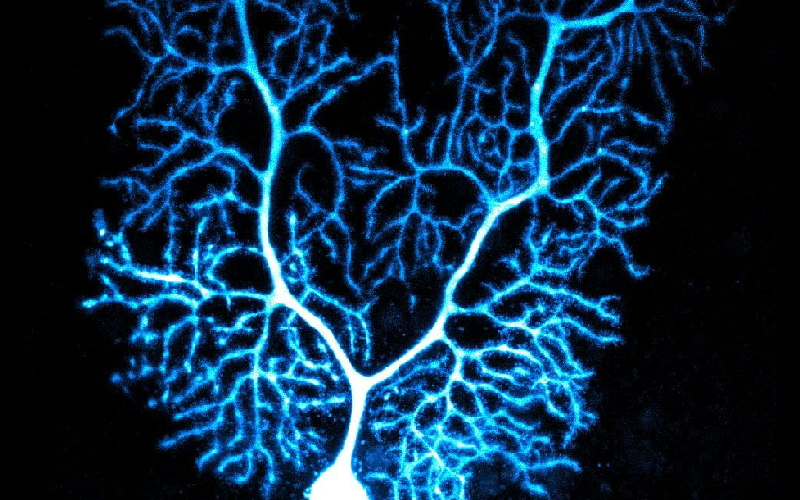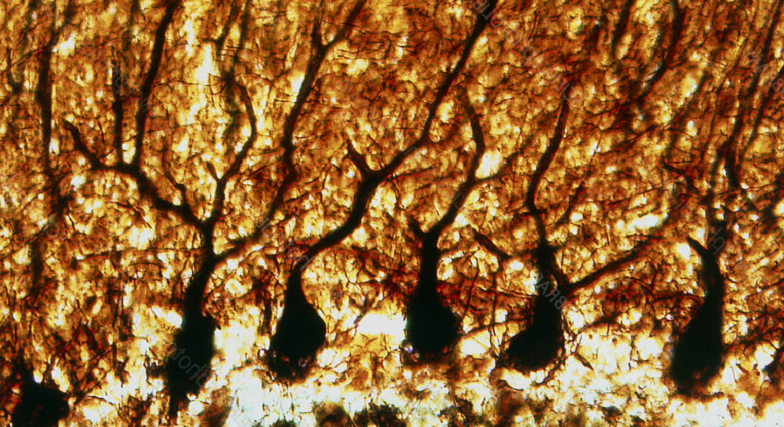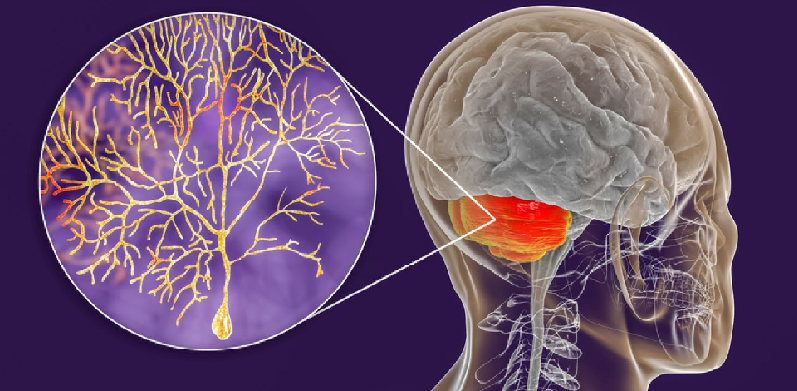
When it comes to understanding the brain, every cell counts — especially those with unique and specialized roles. Nestled within the cerebellum, a region of the brain crucial for motor control and coordination, reside cells known as Purkinje cells. Named after the Czech anatomist Jan Evangelista Purkyně who first described them, these cells are not only striking for their intricate structure but also for their profound influence on how we move and learn. Understanding Purkinje cells can provide critical insights into the overall health of the brain and its cognitive functions.
Contents
What are Purkinje Cells?
When discussing Purkinje cells, it’s important to first know what they are, where they are situated within the brain, and why they caught the attention of scientists in the first place. Understanding their basic characteristics and functions lays the foundation for appreciating their role in more complex activities like movement and learning.
Definition and Identification of Purkinje Cells
Before diving into the intricate roles of Purkinje cells, let’s first identify what they are and what sets them apart from other cells in the nervous system.
Morphological Features
Purkinje cells are one of the most striking types of neurons found in the brain, primarily because of their complex dendritic arbor — an elaborate branching network of dendrites that extends from the cell body. These dendrites receive signals from other neurons and play a critical role in processing information. The cell’s unique shape allows it to form numerous synapses, enabling complex signal processing and integration.
Location in the Brain
Purkinje cells reside in the cerebellum, which is located at the lower back part of the brain, beneath the cerebrum. The cerebellum is crucial for motor control and coordination, among other functions. Specifically, you’ll find Purkinje cells arranged in a single layer within the cerebellar cortex, where they serve as the primary output neurons.
Historical Background of Purkinje Cells
Understanding the historical context in which Purkinje cells were discovered adds a layer of appreciation for their importance in neuroscience.
Discovery
The cells were first described by Czech anatomist Jan Evangelista Purkyně in 1837. Purkyně was a pioneer in the field of microscopic anatomy, and his discovery of these cells opened up new avenues for studying the cerebellum and its functions.
Naming
In honor of their discoverer, these cells were later named “Purkinje cells.” The name has been carried forth into modern scientific literature, symbolizing their importance and the legacy of the scientist who first brought them to light [1].
Basic Functions of Purkinje Cells
After identifying what Purkinje cells are and where they came from, it’s crucial to look at what they actually do in the context of brain function.
Signal Processing
Purkinje cells act as a sort of “computing hub” in the cerebellum. They receive input from multiple sources—mainly from granule cells and climbing fibers—and integrate these signals to send a coordinated output through their axons. This integration is vital for the fine-tuning of motor actions and the learning of new motor skills.
Motor Coordination
The primary role of Purkinje cells is in motor coordination. They assist in the precise timing and execution of movements by sending inhibitory signals to the deep cerebellar nuclei, which are the primary output centers of the cerebellum. This process helps in achieving smooth and coordinated movements.

Anatomy of a Purkinje Cell
Understanding the anatomy of these cells is essential because their structure largely dictates their function, particularly in the realms of movement and learning.
Dendritic Arbor
The most eye-catching feature of a Purkinje cell is its elaborate dendritic arbor. This intricate network of branches emanates from the cell body and plays a significant role in the cell’s ability to receive and process signals.
Complexity and Structure
The dendritic arbor of a Purkinje cell is incredibly complex, consisting of a multi-layered network of finely branched dendrites. This complexity allows for a high degree of synaptic input, meaning that Purkinje cells can receive signals from numerous sources. The structure is planar but intricate, optimizing the space it occupies within the cerebellar cortex [2].
Importance in Signal Reception
This branching architecture isn’t just for show; it’s fundamental to the Purkinje cell’s primary function. The dendritic arbor serves as a sort of ‘antenna’ that captures and integrates signals from other neurons, mainly from parallel fibers and climbing fibers. The more extensive and complex the dendritic arbor, the greater the capacity of the cell to process and integrate incoming information.
Soma (Cell Body)
The dendritic arbor is connected to what is often considered the ‘core’ of the Purkinje cell: the soma or cell body. Let’s look into its structure and role.
Components
The soma of a Purkinje cell contains essential cellular components such as the nucleus, endoplasmic reticulum, and mitochondria, among others. These components are crucial for the cell’s basic metabolic and genetic functions.
Role in Cellular Functions
While the dendrites are essential for receiving signals, the soma is where these signals are partially processed and integrated. The soma is also where the cell’s axon originates, which will eventually transmit the processed signal to other areas of the brain or to the body. Thus, the soma plays a pivotal role in coordinating the input-output functions of the Purkinje cell.
Axon
Completing the anatomy of the Purkinje cell is its axon, a long, slender projection that transmits signals away from the cell body. The axon’s role in signal transmission is indispensable for the cell’s function.
Unique Features
In contrast to the complex branching of the dendritic arbor, the axon of a Purkinje cell is generally a single, unbranched structure. However, it can form multiple synaptic contacts with its target neurons, particularly in the deep cerebellar nuclei.
Signaling Mechanisms
Purkinje cell axons are unique in that they primarily send inhibitory signals. These inhibitory outputs play a crucial role in modulating the activity of the deep cerebellar nuclei, thereby affecting movement and motor learning through a fine-tuning mechanism.

Purkinje Cells Role in Movement
One of the most prominent roles of these specialized cells is in facilitating and coordinating movement. From fine-tuning simple tasks like lifting a finger to coordinating complex actions like playing a musical instrument, Purkinje cells are pivotal in making these processes smooth and efficient.
Motor Coordination
First on our exploration list is how Purkinje cells influence motor coordination. Their involvement in this aspect is particularly fascinating due to the intricacies involved in making even the most basic movements smooth and coordinated [3].
Connection to the Cerebellum
As mentioned earlier, Purkinje cells are the primary output neurons of the cerebellar cortex. This makes them critical in the cerebellum’s role in motor coordination. They receive a wealth of information from various parts of the brain and spinal cord, process it, and then send the relevant signals to help fine-tune movements.
Influence on Muscle Contractions
Purkinje cells send inhibitory signals to the deep cerebellar nuclei, which are the primary output centers of the cerebellum. By modulating the activity of these nuclei, Purkinje cells influence the timing and strength of muscle contractions. This ensures that our movements are not just intentional but also precisely controlled and well-coordinated.
Balance and Posture
Next, let’s examine how these cells play a role in something as fundamental yet complex as maintaining balance and posture. It’s easy to take these skills for granted, but they are essential for everything from standing upright to walking or even sitting.
Gravity Sensing
Purkinje cells contribute to our sense of balance by receiving input about our orientation in space. Inputs from the vestibular system — our internal ‘gravity sensor’ — are processed by Purkinje cells to help us maintain balance and posture. Their inhibitory output then adjusts the activity of muscles to maintain a state of equilibrium.
Correction Mechanisms
When you stumble or trip, your body instinctively works to regain balance. Purkinje cells are a crucial part of this corrective mechanism. They rapidly process the information about the sudden change in orientation and send out signals that help adjust your posture within milliseconds, thereby preventing a fall.
Eye Movements
Lastly, it’s worth discussing an often-overlooked aspect of movement control: the movement of our eyes. Purkinje cells also play a significant role in this function.
Saccades
Saccades are quick, simultaneous movements of both eyes in the same direction. Purkinje cells are instrumental in controlling the timing and direction of these movements, allowing us to quickly and accurately shift our gaze from one point to another.
Tracking
When you track a moving object with your eyes, like following a bird flying across the sky, Purkinje cells assist in this smooth pursuit. They integrate information about the object’s speed and direction and help coordinate the eye muscles to maintain focus on the object [4].

Purkinje Cells Role in Learning
So far, we’ve discovered the critical roles that Purkinje cells play in coordinating and fine-tuning our movements. But their influence doesn’t end there. These fascinating cells also play a role in learning, particularly motor learning.
Motor Learning
The first type of learning we’ll focus on is motor learning. This involves the acquisition and refinement of new motor skills, and Purkinje cells are at the heart of this process.
Plasticity in Synapses
One of the most remarkable aspects of the brain is its plasticity, the ability to change and adapt. Purkinje cells exhibit synaptic plasticity, meaning that the strength of the connections between these cells and their input neurons can change. This adaptability allows us to learn new motor skills by optimizing the signaling pathways involved in those skills.
Error Correction in Learning
Motor learning often involves trial and error. Purkinje cells play a role in the ‘error correction’ aspect of this process. When you make an error in a motor task, feedback mechanisms alert the cerebellum to the mistake. Purkinje cells then adjust their output to correct the error, thereby helping you improve your performance over time.
Associative Learning
Associative learning is another area where Purkinje cells have a significant impact. This involves associating one stimulus with another, which is the basis for many types of learning including conditioning.
Classical Conditioning
Remember the famous experiment by Ivan Pavlov with dogs and bells? That’s a prime example of classical conditioning. Purkinje cells are implicated in similar processes in the human brain. They are involved in forming associations between different types of stimuli, thereby playing a role in conditioned responses.
Contextual Learning
In addition to associating two different stimuli, Purkinje cells also help us learn in a more complex, contextual manner. They contribute to our ability to understand the context in which certain stimuli and responses are relevant, thereby aiding in more nuanced forms of learning.
Cognitive Learning
While Purkinje cells are primarily known for their roles in motor and associative learning, emerging research suggests they may also be involved in more abstract forms of cognitive learning.
Problem-Solving and Adaptation
Studies indicate that Purkinje cells might be engaged in higher-order cognitive functions like problem-solving and adaptation. Though research in this area is still in its early stages, the complexity of Purkinje cells makes them a likely candidate for these advanced functions [5].
Potential Role in Language Learning
While the cerebellum has traditionally been associated mainly with motor functions, newer research suggests a role in cognitive functions like language. Given the central role of Purkinje cells in cerebellar function, it is plausible that they might also contribute to learning language, though more research is needed in this area.
Disorders and Diseases Affecting Purkinje Cells
We’ve looked into the essential roles that Purkinje cells play in movement and learning. However, it’s crucial to understand what happens when these cells are compromised due to disorders or diseases. Understanding the impact of various conditions on Purkinje cells not only deepens our comprehension of these versatile cells but also gives us insights into a range of neurological issues.
Cerebellar Ataxia
The first condition we’ll look into is cerebellar ataxia, a motor disorder that leads to a lack of voluntary coordination of muscle movements.
Symptoms and Mechanisms
Individuals with cerebellar ataxia exhibit symptoms such as shaky movements, clumsiness, and difficulty with tasks requiring coordination. This disorder is often directly linked to the degeneration or damage of Purkinje cells, affecting their ability to properly modulate and fine-tune movements.
Causes
The causes of cerebellar ataxia can be varied, including genetic mutations, alcohol abuse, or even exposure to toxic substances. In each of these cases, Purkinje cells are among the most severely affected, leading to the motor symptoms observed.
Autism Spectrum Disorder (ASD)
Another area of interest is the potential link between Purkinje cells and Autism Spectrum Disorder (ASD).
Observations in Research
Studies have found that individuals with ASD often have fewer Purkinje cells. Though the relationship is not entirely understood, the reduction in these cells could potentially contribute to the motor and cognitive symptoms observed in ASD.
Ongoing Investigations
Research is ongoing to better understand the role of Purkinje cells in ASD. Because these cells are involved in a range of functions, from motor skills to potentially more complex cognitive functions, they present a compelling avenue for future research into the disorder.
Spinocerebellar Ataxias
Spinocerebellar ataxias are a diverse group of hereditary ataxias that can severely affect Purkinje cells.
Genetic Factors
Spinocerebellar ataxias are often caused by specific genetic mutations that result in the degeneration of Purkinje cells over time. The death of these cells leads to progressive issues with movement and coordination.
Range of Severity
The severity and progression of symptoms can vary widely among individuals, depending in part on which Purkinje cells are affected and how quickly they degenerate. Some forms of the disease progress rapidly, leading to severe disability, while others may be more gradual.
References
[1] Mixed Selectivity in the Cerebellar Purkinje-Cell Response during Visuomotor Association Learning
[2] Cerebellar Purkinje cell activity drives motor learning
[3] Autonomous Purkinje cell activation instructs bidirectional motor learning
[4] Purkinje cell activity during motor learning
[5] Gating by Memory: a Theory of Learning in the Cerebellum

